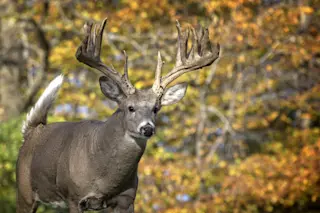The animal kingdom is brutal. To survive, many animals have evolved with built-in weapons, including horns, quills, shells, claws, and tusks, to name a few. Members of the Cervidae family — including the white-tail deer, mule deer, elk, moose, and reindeer/caribou — have developed antlers to serve as a defense system. But they also have other purposes. Here, we answer all your antler questions. Read on to find out more.
(Credit: Rick Fansler/Shutterstock)
Rick Fansler/Shutterstock
Antlers are bony structures that extend out of permanent growths on a Cervidae's head — usually only the male — called pedicles. Male deer and other Cervidae shed their antlers annually, usually in the winter, and grow new ones in the spring.
The antlers consist of an interior core made of bone and an outer covering called "velvet." The velvet layer comprises skin, blood vessels, and short hair and nourishes the growing bone during the ...















